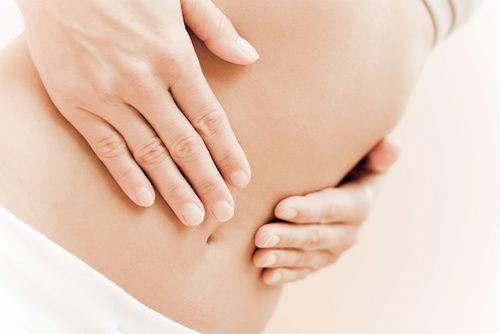Diet for menstrual pain it must be rich in magnesium and limit the consumption of sweets and red meats. Let's find out better.
> 1. Menstrual pains
> 2. Nutrition in case of menstrual pain
> 3. Did you know that

Menstrual pains
About half of women suffer from dysmenorrhea, i.e. menstrual pain. Of these, a percentage equal to more or less one third of cases accuse a very intense symptomatology, which negatively interferes with normal daily activities and, consequently, with the quality of life.
In the vast majority of cases the dysmenorrhea it is primary, that is, it has no known cause. Sometimes, however, it can be secondary, that is, it can be the symptom of an underlying disorder or pathology such as, for example, genital infections, endometriosis, uterine fibroids, disorders of the ovaries.
Menstrual pains are more frequent in very young women and therefore tend to reduce or disappear with age or even with the use of estrogen-progestogen contraceptives.
The symptomatology mainly affects the lower abdomen and lumbar region, but it can also radiate to the lower limbs. Usually the pains are cyclical and crampy. They can appear before or during menstruation; they usually start a couple of days before period and peak on the second day of menstrual flow, and then decrease in the following days.
It is believed that menstrual pain is based on the production of prostaglandins, substances that reduce the blood supply to the uterus and make the painful endings more sensitive.
Nutrition in case of menstrual pain
A supply adequate can help to limit the onset of menstrual pains. The uterus is a muscle and, when it contracts, it generates a crampy pain sensation. One of the measures to combat dysmenorrhea is therefore that of balance the intake of magnesium.
A magnesium dysmetabolism predisposes, in fact, to contractures and cramps of all muscles, and therefore also of the uterus. Before eventually resorting to supplements, it is advisable to increase the intake of this mineral through the diet.
Magnesium is present in several foods, species of plant origin; it is found in green leafy vegetables, dried fruit, legumes, especially lentils and beans, in whole grains.
Furthermore, mushrooms, cocoa and lemons are very rich in magnesium bananas. In general, however, a balanced and varied diet guarantees a correct intake of magnesium as well as of all vitamins and minerals. To combat menstrual pain it is also advisable to avoid coffee, alcohol and smoking which can reduce the absorption of magnesium.
Another precaution against menstrual pain is that of limit the consumption of sweets and, in general, of foods based on refined sugars. These foods, in fact, favor, albeit indirectly, the production of prostaglandins.
Fats must be chosen carefully. It is recommended to consume less hydrogenated fats and red meats; more foods rich in omega 3, such as, for example, blue fish.
Also the retention water it is the enemy of women, and not only during the menstrual cycle. It is therefore preferable to have alow sodium diet and that gives ample space to foods capable of promoting diuresis.
In addition, the intake of herbal teas emmenagogues that regulate the flow and relieve the symptoms of premenstrual syndrome and dysmenorrhea is very useful against menstrual disorders.
Also discover all the homeopathic remedies for menstrual pain

Did you know that
When the onset of menstruation is preceded by a set of physical and psychological symptoms that cause discomfort to the woman we speak of premenstrual syndrome. The causes are not well known. The symptoms are not specific as they vary from woman to woman; it may include pain, nausea, migraine, intestinal motility disorders with constipation or, conversely, diarrhea, breast tenderness, weight gain, swollen ankles and difficulty concentrating.
In addition, most of the women affected by premenstrual syndrome reports feelings of nervousness, irritability, depressed mood, a tendency to cry or outright unmotivated crying fits. Characteristically, the disorders appear 4-7 days before menstruation and then diminish or disappear with the arrival of the period.
Any therapy is personalized based on the nature and severity of the symptoms. In many cases, however, a change in diet is enough and lifestyle to get better. In addition to following a correct diet, moderate and regular physical activity is useful. It is also advisable to allow yourself the right rest, especially when the symptoms become more annoying.
How to relieve the symptoms of dysmenorrhea with aromatherapy massage
Other articles on nutrition and menstrual pain:
> The menstrual cycle, borage and movement
> Rubus Ideus against premenstrual syndrome


























